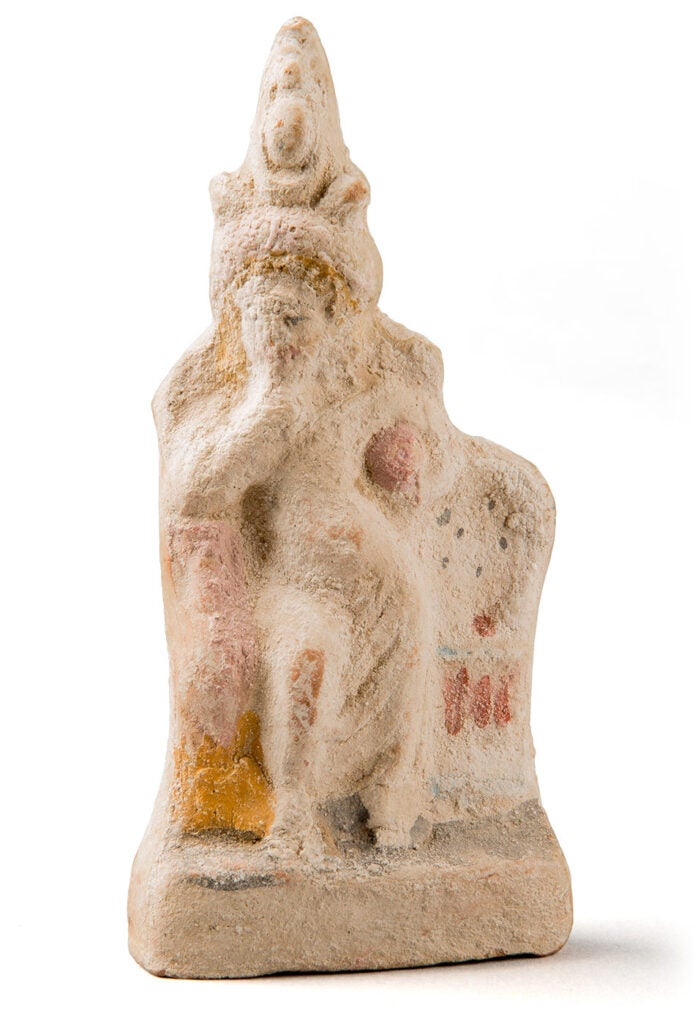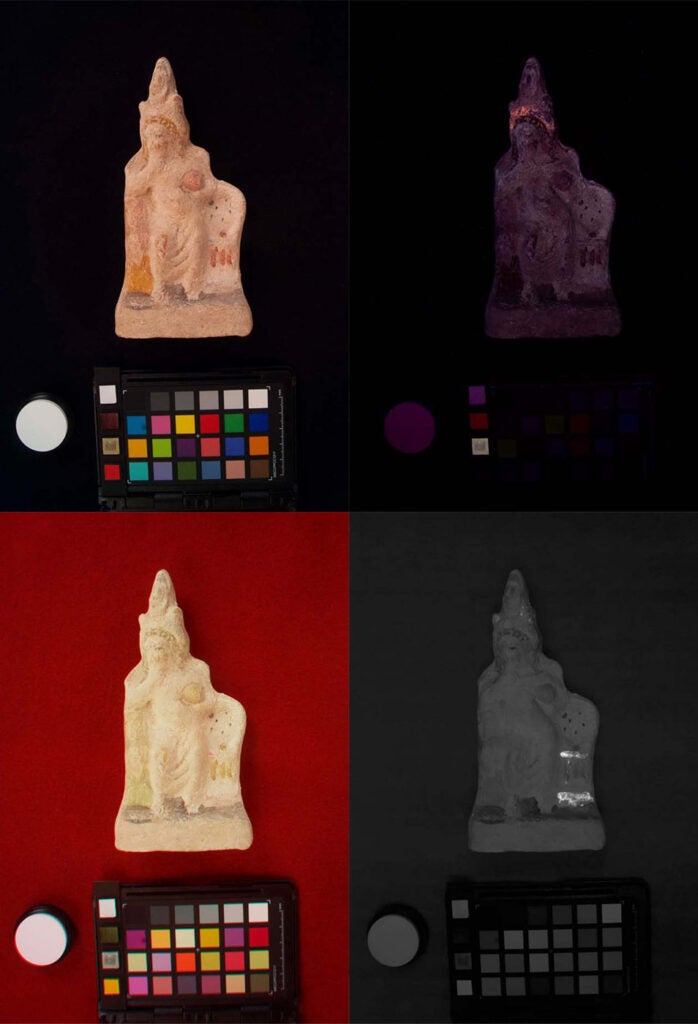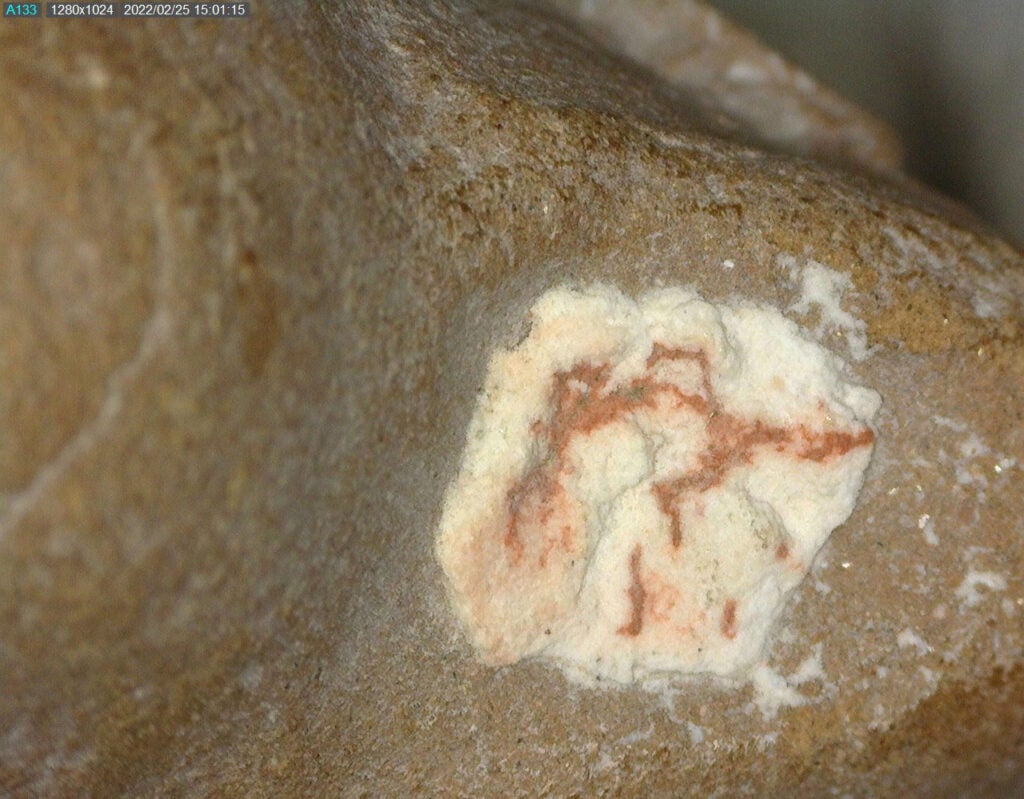Harpocrates Figurine (KM 6449)
This colorfully painted terracotta figure of Harpocrates, a Greek adaptation of the Egyptian sun god Horus, was found in House E7, Room M, at Karanis. Similar figurines were found in other rooms of the house. A range of pigments are preserved on this figurine, including red earth, madder lake, yellow earth, Egyptian blue, and carbon black over a calcite or gypsum ground.
In addition to having a remarkable amount of preserved color, this figurine helps illustrate how Multispectral/Multiband Imaging (MSI) techniques can be used to identify specific pigments: the orange-pink luminescence of madder lake under UV light; the warm yellow infrared false color of red iron oxide; and the bright luminescence of Egyptian blue in the infrared light range (960 nanometers to be exact!).

Isis-Aphrodite Figurine (KM 6488)
This tiny terracotta figurine is a colorful depiction of Isis-Aphrodite anasyromene, which means “lifting her skirt” in Greek. It was found in House B1, Room K, along with small tools, beads, coins minted in the 1st century CE, and bits of furniture. Pigments detected include madder lake—used alone and mixed with another, unidentified pigment—and Egyptian blue over a calcite or gypsum ground.
The goddess’s purple robe is an unusual paint color for Karanis—this is one of only three examples we’ve found on objects from the site in this study. Purple could be produced in many different ways by combining a variety of red, pink, blue, and black pigments, so it is a challenging color to sort through analytically. Here, it is made using a combination of madder lake (which appears bright orange-pink under UVL and emphasizes the draping of the robe) and a pigment we have not yet identified. We’re considering our next steps, which might include taking a very small sample of this pigment mixture and looking at it under our polarized light microscope.
Dog figurine (KM 6909)
This cute terracotta dog was found at Karanis in House C38, Room B, along with another terracotta dog. The canine has pointy ears, a curly tail, and wears a bell or amulet around its neck. Although the dog doesn’t appear to have any preserved color, a closer look reveals quite a bit of the object’s original paint decoration.
While examining the dog using our handheld digital microscope, we discovered pink pigment on the dog’s belly, legs, chest, and face, yellow pigment on the tail, back, and outer ears, and red pigment on the inner ears and toes. There was also a faint trace of yellow on the dog’s collar. These results gave us enough information to do an approximate reconstruction of the dog’s original color scheme.









